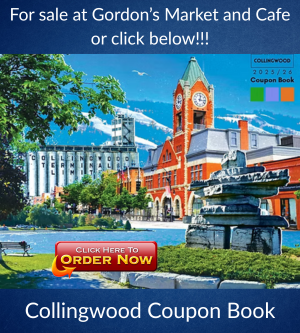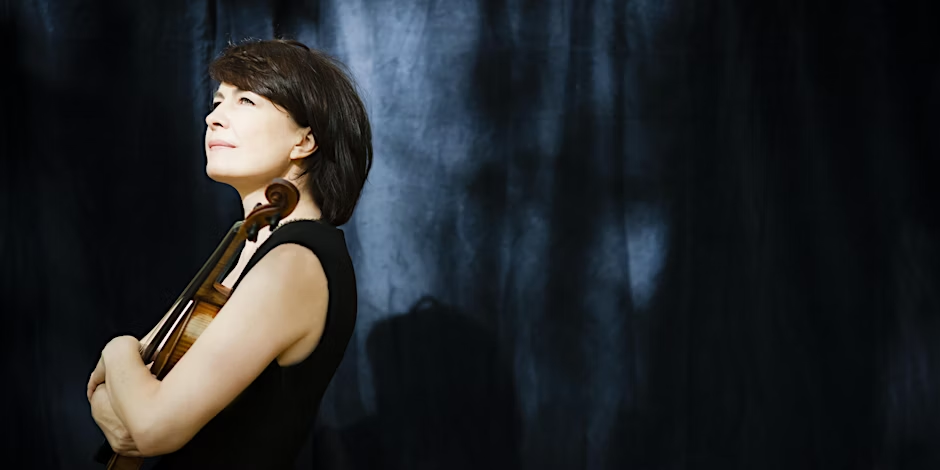Violinist Lucia Barcari, pianist Mayu Funaba and cellist Kerri McGonigle join forces to present Tango Nuevo and Beyond: North Meets South.
Saturday, June 21 · 7:30 – 9pm EDT. Doors at 7pm
L.E. Shore Memorial Library, The Blue Mountains Public Library173 Bruce Street South Thornbury, ON N0H 2P0
Lucia Barcari, a world class, European trained violinist brings her passion for Tango to the L.E. Shore Gallery space, along with Montreal pianist Mayu Funaba and Thornbury cellist Kerri McGonigle. The program, entitled Tango Nuevo: North meets South featuring works by Astor Piazzolla, Hatzis Christos, Victor Davies and Martin Kutnowski.
A PORTION OF THE PROCEEDS WILL GO TO SUPPORT THE 2025 SWEETWATER MUSIC FESTIVAL. https://www.sweetwatermusicfestival.ca/
For Tickets CLICK HERE
DETAILED PROGRAMME NOTES
Christos Hatzis
Afterthoughts 1
Afterthoughts 1 consists of six different ‘orchestrations’ of a basic tune, beginning with a tango-like harmonization, moving through jazz and finally ending up with a rather technically difficult setting in a style that draws heavily from the classical concert music of the salon era.
Victor Davies
Silhouettes (Piano Trio No. 1), 1988
“… silhouettes suggest memories, hazy but persistent.
“‘Night Shadows’ is driven by the dark percussive sounds of the piano… a jazz-based idiom to mirrors the mood of urban night life. […] ‘Perfume bottles’ was inspired by the trio’s cellist who happened to collect them… I tried to evoke the languid atmosphere of an elegant salon scented by the vapours escaping from crystal bottles. ‘Tango 55’ uses a melody I composed for the movie Latitude 55. […] Included here because of the violinist’s Brazilian background, it features the violin in a Latin, gypsy role. ‘City Lights’, a theme with variations, has a melody of a Chaplinesque and cartoon character which I though would give all the instruments a chance to shine.”
Martin Kutnowski
Buenos Aires Y2K, Piano Trio
The title of the piece quotes the name of one of the tangos composed by Astor Piazzolla during the seventies, Buenos Aires hora cero (Buenos Aires at Midnight). The purpose of the quotation is to pay tribute to this composer, who was able to blend on the one hand his origins as a bandoneón player in one of the main tango orchestras of Argentina, and on the other hand his later rigorous classical training, creating the unique sound of his Nuevo Tango.
Each of the three movements of my piece is based on a specific musical subgenus within the tango repertory. The first, a “square” tango, is in quadruple meter and ternary form. In the A section, which follows closely the structure of a typical sung tango, the flexibility of the rhythm and the written-out rubato mirror the performance practice of the style. After a short transition that establishes a slower tempo, the cello introduces the subject of the middle section, shortly answered by the violin. The sharp rhythms and strong dynamic contrasts of the texture mimic a passionate and aggressive confrontation, much in the way in which two compadritos (a bully character of the suburbs) would fight with knives in the dark streets of Buenos Aires at the beginning of the twentieth century. Little by little, the tempo gradually speeds up, the piano enters the conflict, and the “fight” turns into a sensuous choreography with a decidedly milonga flavor. This section’s rhythmic and contrapuntal intensity makes it perhaps the climax of the movement. Later, the fugal subject is once more stated by the cello with a accompaniment in fast arpeggios by the piano. Introduced by a slower retransition, a modified A section restores the original tonal center and rounds out the movement with an emphatic coda.
During the second half of the nineteenth century, the gauchos (or “cowboys”) were the main characters living in the prairies of Argentina. Back then, a typical gaucho would usually stop by a pulpería (“saloon”) from time to time, and there he would have a break between badly paid jobs. In that context, Payada was the name of a sort of “duel of words” between two or more gauchos. One of them, accompanying his words with a guitar, would share his own misfortunes and reflections with another, creating the rhymed verses as he went along. My second movement, of a more intimate character, is based on this improvisational art-form. Hence, each one of the three musical tempi and textures present in the movement picture specific imagery within this setting: the slow sustained chords of the beginning “paint” the loneliness of the prairie, perhaps at sunset; the rhythm of the second phrase features the slow pace of the walking horse; the alternation between the recitative textures and the rhythmic figure represent the improvisation itself, accompanied with the guitar.
The last movement, a Valsecito criollo (Little Creole Waltz), is in a modified rondo form. Although its character is that of a fast waltz, it anyway shares the melancholy and tone of the typical tango. In the last reprise of the theme, and as in the first movement, the original theme becomes the subject of a strict fugue, which serves to climax the entire piece. Just before the strident conclusion, a short contemplative cadenza recalls the slower moods of the two previous movements.
Astor Piazzolla
The Four Seasons of Buenos Aires, Piano Trio
Inspired by The Four Seasons of Vivaldi, Piazzolla composed over a six-year period (1964-70) four tangos and published them as The Four Seasons of Buenos Aires. Each tango is a unique blending of the syncopations of the dance, Bach-like counterpoint, touches of Romantic and Impressionistic music, and jazz. Originally, the pieces were conceived as separate compositions rather than one suite, but Piazzolla himself established the practice of performing them as a unit.
The four tangos were originally scored for a quintet of violin, piano, electric guitar, double bass and bandoneon. However, they have been arranged for a wide assortment of groups – including violin and string orchestra, piano trio, saxophone quartet, period Baroque instruments, six cellos and double bass, and symphony orchestra.
Apparently, each of the four “seasons” in Buenos Aires has its unique character. Thus “spring” is a lively fugue, “summer” is outdoor music seasoned with street noises, “autumn” is a busy time of year, and “winter” is quiet and a bit desolate.
MEET THE ARTISTS!

Cellist and viola da gambist, Kerri McGonigle is the Artistic Director of the Academy Concert Series, chamber music concerts dedicated to historically informed performance (HIP). A recipient of the Margarita Heron Pine String Prize and the Beryl Barns Graduate Scholarship, Kerri graduated with a Masters of Music degree in cello performance from the University of Alberta. While studying in Paris, she won Premier Prix with unanimous distinction in violoncello and chamber music from the Gennevilliers Conservatory. Having completed an Advanced Certificate in Baroque Performance with Tafelmusik through the University of Toronto, she performs regularly as a soloist, recitalist, chamber musician and orchestral cellist with many different groups. Kerri has been based in Thornbury since 2020 and continues to perform, teach, and coach music (to all instruments). She loves hiking in the forest and spending time with her two amazing children, who inspire her deeply. https://kerrimcgonigle.com/

Concertmaster of the Georgian Bay Symphony, and founding member of Decus Duo, Lucia Barcari is a versatile violinist with a special affinity for collaborative projects in diverse genres and ensembles. She enjoys an active career as an orchestral leader, recording artist, chamber musician, and folk violinist, throughout Canada and Europe. In 2023, she produced and released the album “Piazzolla Pizzazz,” in collaboration with international guitarist Roman Smirnov, featuring works by the legendary tango composer Astor Piazzolla. A skilled tango violinist, Lucia is a member of Amarras Tango Quintet, commissioning and premiering “Immigration Suite” by Luis Ramirez in 2022.
Committed to educating a new generation of musicians and audiences, Ms. Barcari has worked with Sistema Toronto, a philanthropic organization created to enhance the social development of children through music education. An active orchestral musician for over twenty years, she has served as concertmaster for the Ottawa Valley Music Festival, Peterborough Symphony Orchestra and Nuove Musiche in Belgium. Born in Chișinău, Moldova, was admitted to the Music School for Talented Children at the age of seven, and later won the Moldovan National Music Competition. She immigrated to Canada in 1996 and became a Canadian citizen in 2000. https://www.luciabarcari.com/

Born in Chiba, Japan. McGill Bachelor graduated pianist, Mayu Funaba began her music studies at age 4.She has studied classical piano under Ms.Aki Kuroda, Ms. Kaoru Ujita, and Mr. Nikita Juzhanin, and jazz piano under Jeffry Johnston and Min Rager, also Tango piano under Pablo Estigarribia.
After she graduated from Toride Shyoyo High school’s music course, Mayu moved to the United Kingdom where she studied music production at the Academy of Contemporary Music in Guildford Surrey, where she successfully completed the course and received her Higher Diploma certificate.
While studying in the U.K. she started her career as a pianist, working at the Ambassador Theatre in Woking, Surrey.
After finishing her studies at the Academy of Contemporary Music she returned back to Japan where she began performing extensively as a soloist and accompanist playing many different genres of music and at several different music venues around Japan as one of the musicians at Nakamura ltd.
In 2009 Mayu passed The Associated Board of Royal College of Music Diploma with distinction and in 2010. She completed the Stuttgart Music University Master Class under a scholarship from the Tokyo International Association of Artists. In 2013 Mayu composed music for the exhibition of the audio and visual installation piece “a stake in the river” at the Nakanogo Biennial 2013 in collaboration with Junichi Akagawa and Yuki Shindo. She also performed a piano improvisation at the exhibition where she received favorable reviews. In 2019, she participated in the Stow Tango Music festival 2019 where she performed as one of the members of the tango orchestra with maestro Nestor Marconi. In 2021, she started working as a professional ballet piano accompanist at the Ècole supérieur de ballet du Québec.
Currently, she is performing and teaching music based in Montreal where she finished her jazz piano study at bachelor of music program in the McGill university. https://mayufunaba.wixsite.com/mayufunaba

























